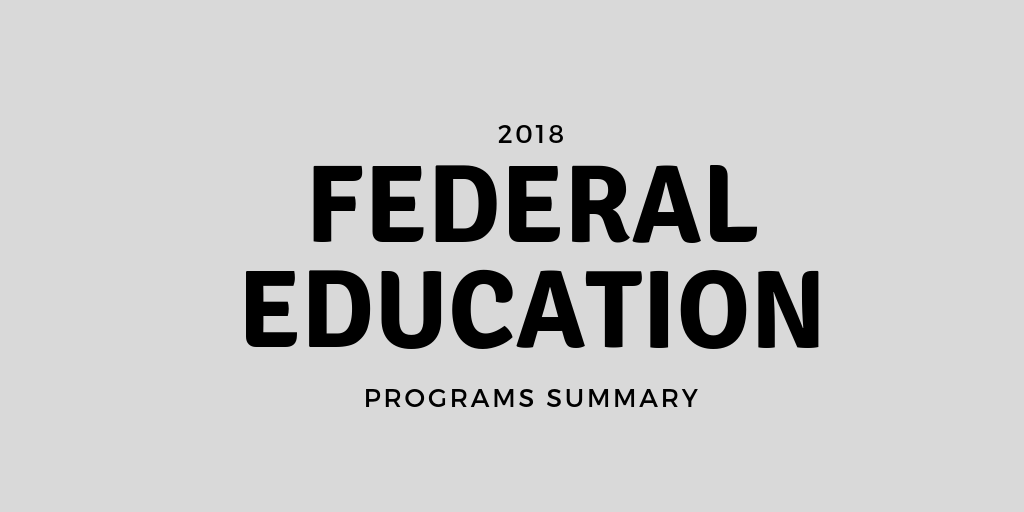
This piece features several major programs from the Elementary & Secondary Education Act (ESEA), as well as the McKinney-Vento Homeless Assistance Act (Title VII-B Education for Homeless Children and Youth) and IDEA (Special Education). We will give a snapshot of each, which includes funding and purpose. Funding amounts listed are the most currently available from the U.S. Department of Education (ED). Read on to learn more about federal education programs.
Title I, Part A
Title I, Part A improves basic programs operated by local educational agencies. The goal of this program is to provide financial assistance to LEAs and schools with high percentages of children from low-income households to help ensure that all children meet state academic standards. In order to receive these funds, schools must serve children who are failing or most at risk of failing to meet state academic standards. The government allocated $15.8 billion to this program.
Title I, Part C
Title I, Part C ensures that all migrant students reach challenging academic standards and graduate with a high school diploma or complete a GED, which will prepare them for responsible citizenship, further learning, and productive employment. The government allocated $375 million to this program.
Title II, Part A
Title II, Part A increases academic achievement by improving teacher and principal quality. This is done by increasing the number of highly qualified teachers, principals, and assistant principals through professional development, support for new teachers, and other like activities. The government allocated $2.1 billion to this program
Title III, Part A
Title III, Part A ensures that English Learners (ELs), including immigrant children and youth, attain proficiency n English. LEAs must use Title III funds to supplement state language instruction educational programs that are designed to assist ELs achievement goals. The government allocated $737 million to this program.
Title IV, Part A
Title IV, Part A improves students’ academic achievement by increasing capacity of States, local educational agencies, schools, and local communities to provide students with access to a well-rounded education, improved school conditions, and improved use of technology. The government allocated $1.1 billion to this program.
Title IV, Part B
Title IV, Part B supports the creation of community learning centers that provide academic enrichment opportunities during non-school hours for children, in particular for students who attend high-poverty and low-performing schools. This program helps students meet state and local standards in core academic subjects, such as reading and math. The government allocated $1.2 billion to this program.
Title V, Part B
Title V, Part B provides rural LEAs with financial assistance to fund initiatives aimed at improving student academic achievement. Districts must choose to participate in one program or the other: REAP (Rural Education Achievement Program) or SRSA (Small Rural School Achievement). The government allocated $181 million to this program.
Title VI, Part A
Title VI, Part A is designed to ensure that American Indian, Native Hawaiian, and Alaska Native students meet challenging state academic content and student academic achievement standards, as well as to meet their unique culturally-related needs. The government allocated $180 million to this program.
Title VII, Part B
Title VII, Part B supports an office for coordination of the education of homeless children and youths in each state, which gathers comprehensive information about homeless children and youths and the impediments they must overcome to regularly attend school. This program is also known as the McKinney-Vento Education for Homeless Children and Youth. The government allocated $85 million to this program.
IDEA, Part C
IDEA, Part C governs how states and public agencies provide early intervention, special education, and related services to more than 6.5 million eligible infants, toddlers, children, and youth with disabilities. As IDEA is considered a civil rights law, education must be provided to students as detailed in the law regardless of the amount of federal funds received. The government allocated $13.4 billion to this program.

